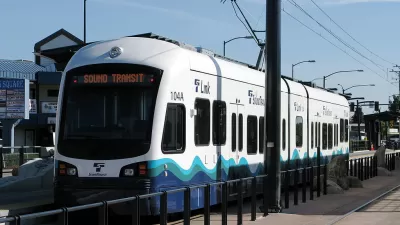Over ten percent of housing units in Seattle are single-room units, a new high and the result of a shift in housing costs and trends in recent years.

New Census data show that for the first time over 10 percent of Seattle housing units have just one room. The number of units has increased 80 percent since 2010, when there were more nine-room units than single-room ones.
Seattle is now more similar to San Francisco, the only other large U.S. city with a share of one-room units above the 10 percent mark. What is happening in these cities with these smaller units is not the norm across the country, says Gene Balk:
They are much rarer in a lot of other cities, particularly places where most people live in houses and rents aren’t anywhere near as high as Seattle. At the other end of the spectrum from San Francisco and us is Virginia Beach, Virginia — only about one in 100 housing units are one room.
While many of these units are studios, Balk notes that micro-units, generally smaller than 400 square feet, have been springing up around the city. Because the units are smaller, the rents tend to be more affordable, particularly in costlier neighborhoods.
Three-quarters of these one-room units are rentals, and Balk acknowledges they do have their place in Seattle’s expensive housing market. “Living in a single room can’t be the solution to Seattle’s high rents for everyone. It certainly isn’t suitable for a family, or even a couple. But for a young, single person, it can work out well. And in Seattle, there are a lot of them,” says Balk.
FULL STORY: One in 10 Seattle homes has just one room for first time ever

Alabama: Trump Terminates Settlements for Black Communities Harmed By Raw Sewage
Trump deemed the landmark civil rights agreement “illegal DEI and environmental justice policy.”

Study: Maui’s Plan to Convert Vacation Rentals to Long-Term Housing Could Cause Nearly $1 Billion Economic Loss
The plan would reduce visitor accommodation by 25% resulting in 1,900 jobs lost.

Why Should We Subsidize Public Transportation?
Many public transit agencies face financial stress due to rising costs, declining fare revenue, and declining subsidies. Transit advocates must provide a strong business case for increasing public transit funding.

Wind Energy on the Rise Despite Federal Policy Reversal
The Trump administration is revoking federal support for renewable energy, but demand for new projects continues unabated.

Passengers Flock to Caltrain After Electrification
The new electric trains are running faster and more reliably, leading to strong ridership growth on the Bay Area rail system.

Texas Churches Rally Behind ‘Yes in God’s Back Yard’ Legislation
Religious leaders want the state to reduce zoning regulations to streamline leasing church-owned land to housing developers.
Urban Design for Planners 1: Software Tools
This six-course series explores essential urban design concepts using open source software and equips planners with the tools they need to participate fully in the urban design process.
Planning for Universal Design
Learn the tools for implementing Universal Design in planning regulations.
Caltrans
Smith Gee Studio
Institute for Housing and Urban Development Studies (IHS)
City of Grandview
Harvard GSD Executive Education
Toledo-Lucas County Plan Commissions
Salt Lake City
NYU Wagner Graduate School of Public Service





























